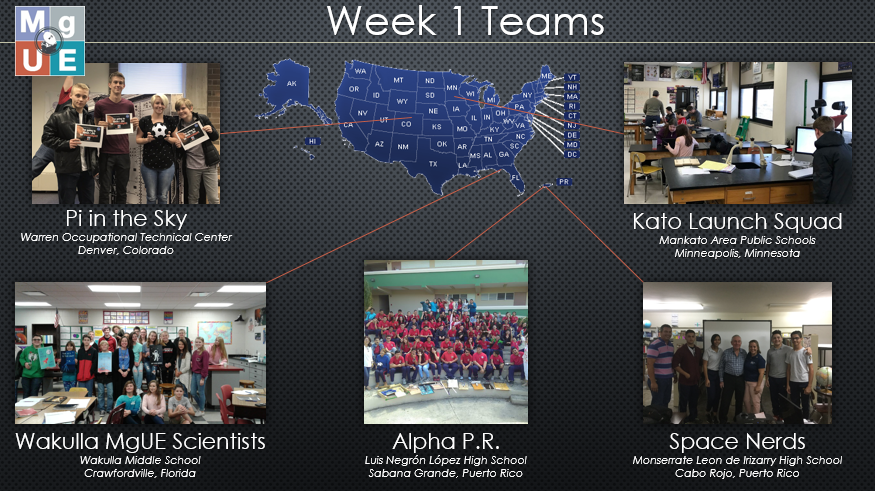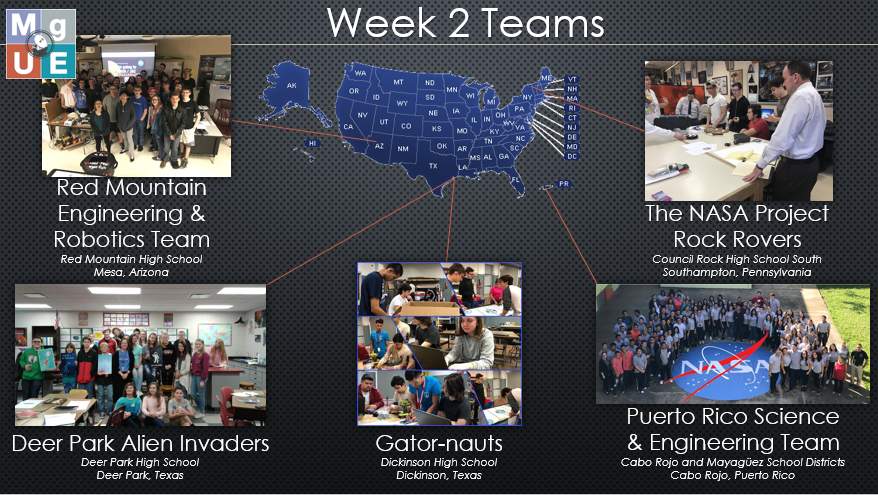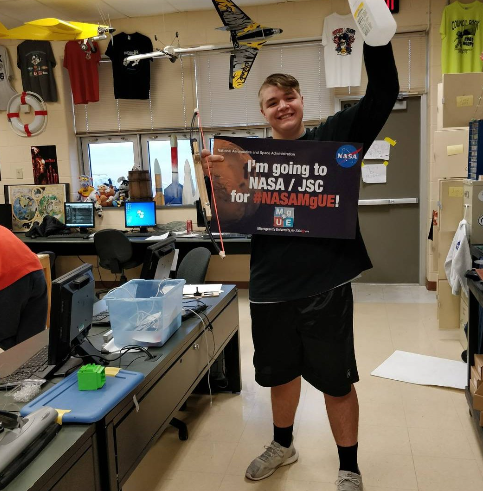Unfolding at Johnson: MgUE

These teachers and students are participants in Microgravity University for Educators (MgUE), a NASA Education program that invites teams of educators and high school students to solve technical problems by designing, building and testing devices in NASA’s unique facilities. MgUE is an authentic learning experience requiring the application of scientific and engineering practices, creating exposure to science, technology, engineering and mathematics (STEM) career pathways.
MgUE’s report card:
- Ten teams total, each with 60 to 100 (or more) team members
- Each visiting team is comprised of two teachers and four high school students
- There are two sessions of on-site portions, each lasting one week
- Week one: March 19 to 23
- Week two: March 26 to 30
- Participants will experience simulators in Building 16, as well as the Partial Gravity Simulator (POGO), tour Johnson and receive briefings from subject-matter experts while visiting
For participants, the journey to Johnson began with the submission of a design proposal to build a Satellite Launching Experimental Device (SLED) coded to autonomously deploy a mock satellite into a moving, targeted zone that mimics a Mars orbital insertion. Each team proposal was reviewed for technical and educational merit, and 10 teams were invited to test their designs on the Precision Air-Bearing Floor (PABF). The teams represent six states and one U.S. territory.

Image Credit: NASA

Image Credit: NASA
Teams were tasked with designing and building their device using household items. To help with the process, participants were paired with a Johnson mentor who aided in integrating student-derived solutions with the selected test-facility requirements. Teams not only had to build their device, they also had to develop an outreach plan to share their work within their community.
Educators will have the opportunity for professional development during the online and on-site portions of the activity through online meetings, webinars, field center tours, interactions with subject-matter experts and learning experiences unique to NASA.
The pinnacle for MgUE participants is traveling to Johnson and testing their SLED in a simulated microgravity and reduced-friction environment on the PABF in the Space Vehicle Mockup Facility.

A student from team Rock Rovers in Southampton, Pennsylvania, proudly shows off his #NASAMgUE sign after their team’s SLED was completed and shipped to NASA.
“When NASA MgUE ended last year, I knew that it was going to be a career-changing experience for me—not in the sense that I would leave teaching, but in that I had a new direction to follow. I teach high school math, and I have constantly been searching for real-world applications to algebra and geometry. With my MgUE experience, I found a place to anchor that search. As I talked about MgUE with my students and community, I found myself repeating the phrases, ‘Math is what NASA does’ and ‘NASA would not exist without math.’ The power of those statements, for my students, is that I am able to share pictures and stories of how the things we learn about in class—such as quadratic functions, properties of geometric figures and conic sections—are directly applied in the work that NASA does. I saw it in person at [Johnson], and I learned about it directly from the NASA employees that use those topics in their jobs every day.” — Emily Dauk, 2017 NASA MgUE participant who will again be participating this year
Interested in getting involved? Here’s how you can:
- If your work brings you by Building 9, stop by and see the students in action from noon to 5 p.m. on Tuesdays, March 20 and 27, and Thursdays, March 22 and 29. This opportunity is limited to those with Building 9 credentials. Those who don’t have access require escorts, and we are unable to take time away from students to accommodate visitors.
- Unable to attend in person? No problem. Employees will have the opportunity to view the testing live, via Ustream, at the dates/times listed above.
- Additionally, anyone who would like to attend the end-of-week presentations is invited to celebrate the teams’ successes on Friday, March 23, and Friday, March 30, from 9:45 a.m. to noon in Building 9, Room 2160. (Building 9 access is not needed for this room if you enter through Door 8.) Teams will be presenting on their experiences leading up to MgUE, their time on-site and plans going forward. There will also be a brief question-and-answer session and certificate presentation ceremony.
- Wednesdays, March 21 and 28: Johnson personnel are invited to bring their lunch and visit with participants between noon and 2 p.m. in the Building 11 café.
- Thursdays, March 22 and 29: Johnson personnel are invited to bring their lunch and visit with participants between 11 a.m. and noon in Building 9, Room 2160
Follow along with the teams through #NASAMgUE on social media.
For more information about MgUE, visit: https://microgravityuniversity.jsc.nasa.gov/about-mgue.cfm
Sandra Jones
NASA Johnson Space Center










